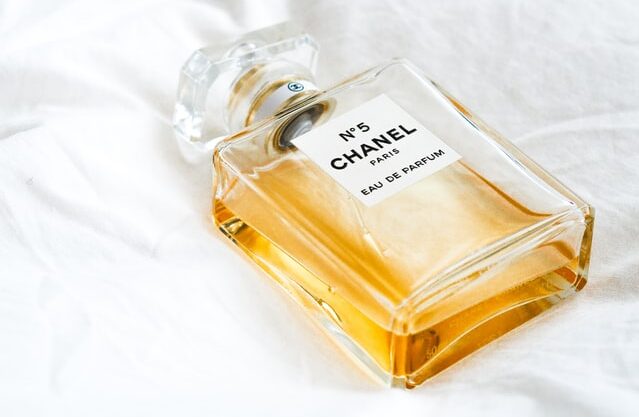Memes are funny. We laugh at that them. But off-late brands have used these Memes as part of their marketing strategy. It’s specifically called Meme Baiting. We’ve all heard of ‘Balenciaga’ and perhaps can vividly recall their famous fashion articles that broke all records in luxury sales. The Triple soled shoes – The T-Shirt Shirt – The Ikea-looking bag – to name a few!
Over the last decade, Balenciaga has become the go-to brand for new age celebrities and hip hop stars. Some of their patrons being the likes of Kim Kardashian, Kayne West or Kylie Jenner.
Let’s see some history of Balenciaga first
Cristóbal Balenciaga founded Balenciaga in 1937 in Paris. It is said that women risked their safety to travel to Paris during World War II to buy or sometimes to just see his dresses and gowns. Often referred to as ‘The Master‘, he is said to have created the future of fashion. His work, praised for its simplicity, has been called sculpture, architecture, and even furniture. In the words of Christian Dior himself,
Haute Couture is like an orchestra, whose conductor is Balenciaga. We other Couturiers are the musicians and we follow the direction he gives.
The closure of Balenciaga in 1968, and the death of Cristóbal Balenciaga, four years later, marked an end of an era for the fashion industry. Balenciaga led a revolution in fashion for 31 long years before laying dormant for 19 years. The Bogart Group acquired the brand’s rights and reincarnated it in 1986. The 101-year-old label has witnessed many transformations since then and in 2001 it came under the umbrella of the luxury powerhouse Kering.
However, it was only after the appointment of the Georgian Creative Director, Demna Gvasalia, in 2015 that Balenciaga truly flourished after decades.
You will be surprised to know how Balenciaga turned the luxury industry’s logic on its head with its product and content strategy!
Balenciaga made products instead of visuals using the Meme Marketing strategy. They made something so absurd that they made people talk about it.
Remember the Balenciaga’s T-shirt shirt with a shirt sewn on the back of a T-shirt? Would you buy it for $1290 or the Ikea-looking bag for $2145? It turns out people are buying. The creative director of Balenciaga, Demna Gvasalia, has created many such meme products that are selling out worldwide. Let me tell you, designing such products really is no accident – it’s a strategy. It’s called meme marketing or as they say meme-baiting!
Basically, meme-baiting or meme marketing is when a piece of artwork or other striking visual is created and used as a bait to get others to opt-in and share, with the sole objective of giving the original brand or product a boost in reach and attention.
In the fashion age driven by Instagram, Demna’s move was remarkable, to win more eyeballs and social shares. He understood that to succeed it was crucial for people to talk about the brand within their personal networks. He also understood that people essentially share something for two main reasons:
1. To entertain
2. To build social capital.
Demna extended this idea to the product itself with an idea that the brand would sell for a ludicrous amount of money. When people saw this, it sparked a conversation about these monstrous yet exciting designs. A conversation that would fail to die.
A thousand memes about a product like this mean a thousand sets of eyeballs on Balenciaga; Now that’s Smart Marketing !!
With all the talking and sustained attention to the brand that the product received, it does two things. Firstly, we make this product a calling card for anyone trying to claim the ‘Absurdly Wealthy’ title.
Demna from his ostentatious pieces, first, created a need for people to document it, in-turn creating the need to wear it.
It’s looking, LOL-ing, and then buying.
Another thing that happens usually is that the people feel like they’re in on the irony by buying into the brand. When a product is trolled, this is what goes on in a consumer’s head:
Is it good then? > I don’t think it is > But maybe I should think it through > (Browses some more) > That’s an expensive bag, but I love it > I hate the T-shirt shirt though > (that’s okay, people are meant to hate it) > Buys logo Cap
Love and hate are extreme emotional reactions. They arouse curiosity which leads to engagement. This lifecycle from awareness to recruitment into the cult is Demna’s genius. To cater to this audience, Balenciaga-stamped staples such as caps and T-shirts.
This product blended content strategy was clutter-breaking.
By adopting this marketing strategy, Balenciaga managed to not only speak well with the meme-fluent audience: Millennials (who now represent more than 60% of the label’s consumers) but also made the brand more accessible. See!! Millennials created Meme and that became a part of Balenciaga’s marketing strategy.
Balenciaga has now grown to represent a movement—one that questions the very essence of fashion.
Demna Gavsalia’s intelligent fearlessness coupled with Balenciaga’s CEO Cédric Charbit’s business approach transformed Balenciaga’s perception in the luxury market and gave it the €1 billion revenue mark.
On the business side of things, Cédric Charbit ensured alignment between the corporate and creative sides to work hand-in-hand with a shared vision and strategy.
The strategy was simple! Meme Marketing!!
Interested in reading more Marketing Strategy Stories? Check out our collection.
Also check out our most loved stories below

How Bata became India’s household name despite being a classy international brand?
Bata is not an Indian brand. It is as international as it can be. But what strategies made it India’s highest selling footwear brand?

Nike doesn’t sell shoes. It sells an idea!!
Nike has built one of the most powerful brands in the world through its benefit based marketing strategy. What is this strategy and how Nike has used it?

Domino’s is not a pizza delivery company. What is it then?
How one step towards digital transformation completely changed the brand perception of Domino’s from a pizza delivery company to a technology company?

Why are luxury brands okay with losing money in clothing?
Luxury brands compete with fashion shows and clothing lines that lose money. But where is the real revenue coming from? Read the story to find out!!

How McDonald’s became a massive Real Estate Company?
Technically Mcdonalds is not a fast-food company. It’s a massive real estate management company with total assets of $47 Bn. What’s the strategy story?

















